“Come down off that column. Taste earthly pleasures till you've had your fill. Till the very word pleasure fills you with nausea.”Simón del desierto [San Simeón del desierto / Simon of the Desert] (Luis Buñuel, 1965)
May
4
National Day Of Prayer
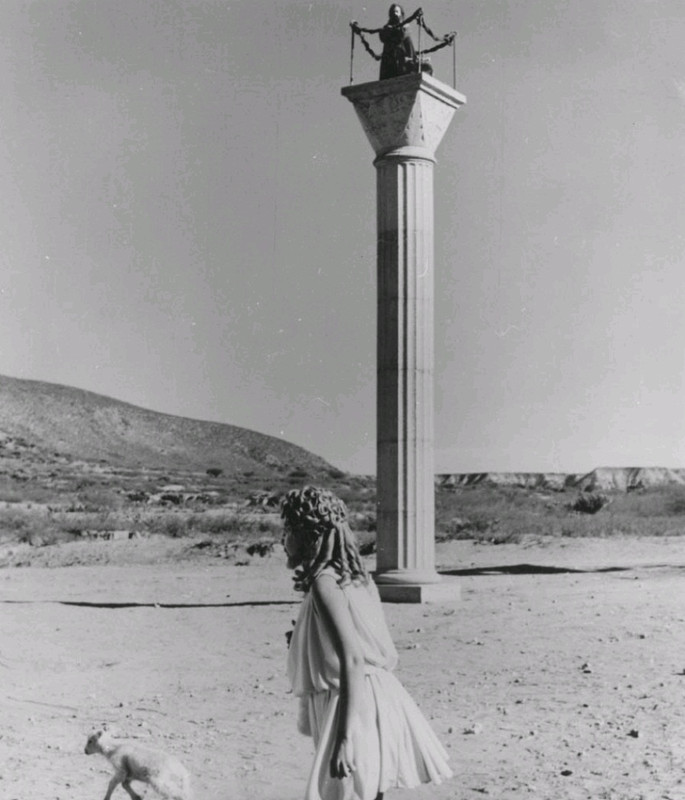
A young, bearded person in toga and a lamb pass Simón (Claudio Brook), praying on top of his pillar. DP: Gabriel Figueroa.
Simón is a stylite in the Syrian #desert on top of a pillar, close to God, #praying. People gather and pray to him, Simón. Simón prays for the people, the animals, himself.
– The Devil
As with anyone who believes in the concept of #sin, or desires to be free of sin, sin comes to Simón.
1960s
憂國 [Yūkoku / Patriotism or the Rite of Love and Death] (Yukio Mishima, 1966)
May
1
Loyalty Day

Shinji Takeyama (Yukio Mishima) and Reiko (Yoshiko Tsuruoka). In a quiet framed still, Shinji lays on a tatami mat in full uniform. Reiko rests her head on his chest. Both have their eyes closed. DP: Kimio Watanabe.
Japanese author Yukio Mishima was, besides an aesthete, a fierce proponent of Japanese nationalism. In 憂國, based on his short 1960 story, Mishima plays palace guard Lt. Shinji Takeyama. Despite being one of the instigators of an ultra-nationalist coup, Takeyama decides he cannot overthrow the government as it would mean having to kill his friends and be disloyal to the Emperor. Returning home, he and his bride Reiko (Yoshiko Tsuruoka) perform #切腹 (#seppuku / #HaraKiri), as in line with Takeyama's #samurai heritage.
Yūkoku is a #SilentFilm that plays out like #Noh #theatre, with an extreme emphasis on the beauty and love of death and loyalty respectively.
After Mishima's own seppuku in 1970, his widow ordered all copies of Yūkoku to be destroyed. In 2005, in Mishima's house, a pristine copy was uncovered in a tea box.
“It's by Vidal Sassoon. It's very in.”Rosemary's Baby (Roman Polanski, 1968)
Apr
30
Hairstyle Appreciation Day

A promotional photo for Rosemary's Baby. Sassoon cuts Farrow's hair while she looks intensely in an offscreen mirror. Around them, several pressmen with recording equipment are visible. DP: William A. Fraker.
Wild with today's eyes, it is not. Yet Rosemary's “very in” Vidal Sassoon #PixieCut was a shocking affair in 68. Director Roman #Polanski flew in Vidal Sassoon – the world's hottest hairdresser – all the way from London, to cut Mia Farrow's hair in a boxing-ring-turned-pressroom. All of a sudden, in her lunch break, Mia/Rosemary transformed from timid waif to women's lib.
– Rosemary Woodhouse
Both the lady's movie husband Guy Woodhouse (John Cassavetes) and real-world husband Frank Sinatra were incensed by the bold move. Of course, in Rosemary's Baby the haircut is Rosemary's attempt to make sense of the changing world around her. Moving to a new city, an unexpected pregnancy, all those lovely new neighbours to socialise with… a girl needs to feel in control!
“Once upon a time, or maybe twice, there was an unearthly paradise called Pepperland. 80,000 leagues beneath the sea it lay, or lie. I'm not too sure.”Yellow Submarine (George Dunning, 1968)
Apr
28
Clean Comedy Day
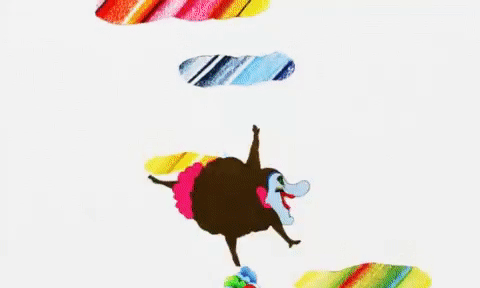
A Blue Meanie pirouetting on a blossoming flower that pushes itself up into the sky. The sky is white while the flower and clouds are multicoloured.
A Gen X-er, I grew up in a completely different world where so many films and TV that kids watched – if watched with today's eyes — were not particularly kid-oriented at all. I fondly remember Monty Python and the Holy Grail (1975) and reenacting the Black Knight scene in the school grounds. Yul Brynner as a faceless, rampaging cyber cowboy in Westworld (1973)? Sure, bring it on! Not that the official kid's movies were “clean”. Did you spot the chicken decapitation in Willy Wonka & the Chocolate Factory (1971)? Well, you will now.
– narrator
Alright, I'll keep it clean and suggest a dose of Yellow Submarine. A fantastic adventure starring The #Beatles (well, their likeness mostly) who are summoned to save utopian, music-loving #Pepperland from the music-hating Blue Meanies. Trippy fun, and lots to discover the older you get.
“The Kola Loka is the law!”Limonádový Joe aneb Konská opera [Lemonade Joe or The Horse Opera] (Oldřich Lipský, 1964)
Apr
27
Kola Loka
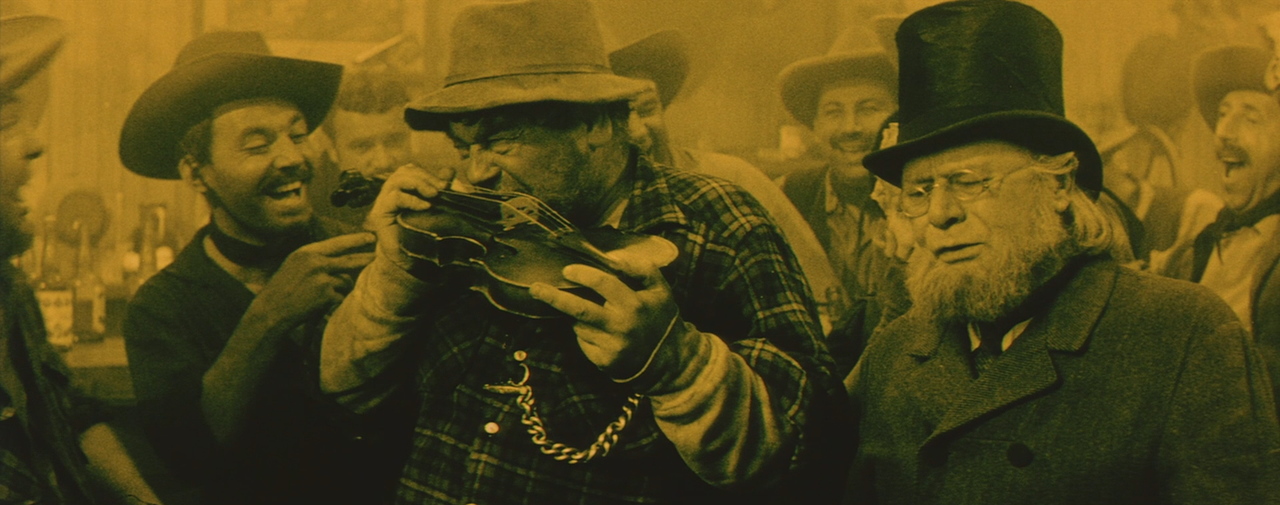
A tough cowboy takes a bite out off a fiddle. DP: Vladimír Novotný.
– Limonádový Joe
“I never lose. Never really.”Le Samouraï [The Samurai] (Jean-Pierre Melville, 1967)
Apr
25
License Plates Day

A pair of hands switching license plates on the front of a Citroën DS. The scene is almost black-and-white. DP: Henri Decaë.
Hitman Jef Costello (Alain Delon) coolly drives a #Citroën DS 21 to his garagiste (André Salgues), who routinely switches the license plates in a beautifully wordless, efficiently lit scene.
Yanco (Servando González + Mohy Quandour, 1961)
Apr
21
Fiddlers Frolic

Juanito (Ricardo Ancona), seen in silhouette, playing his violin in the chinampas. DP: Álex Phillips Jr..
In Mayan worldview, mortals move along the horizontal, gods along the vertical plane. A boy travels both worlds, united by music and wonder.
Juanito, a #Mixquic boy with hypersensitive hearing, finds solace from the hustle of #MexicoCity in the silence of the chinampas – the pre-Hispanic man-made agricultural plots in lake #Xochimilco. There he plays his cardboard fiddle for the nature around him, until the sound from a real violin reaches him. The violinist, an old hermit who lives on one of the chinampas, takes the boy in and teaches him how to master Yanco, his hand-built instrument. When the man dies, the boy goes out at night to be able to play Yanco. In a changing world where the living and the dead used to naturally cross paths, the strings stir different to some.
The #Nahuatl film Yanco is a small cinematic miracle that begs for a beautiful restoration akin to how Govindan Aravindan's കുമ്മാട്ടി [Kummatty] (1979) opened up the world to indigenous filmmaking.
“Isn’t it wonderful that we can be just friends?”Afternoon (Andy Warhol, 1965)
Apr
19
National Hanging Out Day
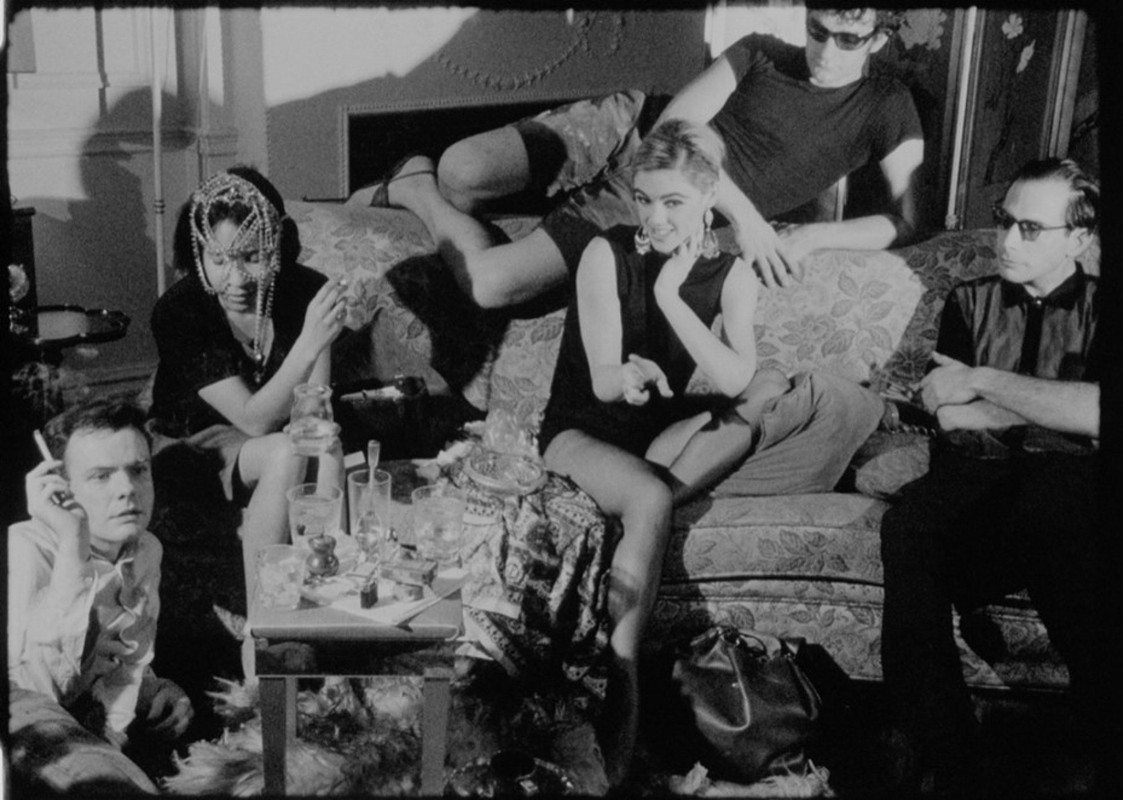
Fabulous Factory people hanging out. Edie interacts with the camera, the rest looks mostly bored. Image owned by the Warhol Foundation yadda yadda for educational purposes only.
Part of the never-realised #SuperStar-studded The Poor Little Rich Girl Saga, #Warhol's Afternoon documents a day in the life of doomed socialite Edie Sedgwick. Miss Sedgwick and her entourage (Ondine, Dorothy Dean, Arthur Loeb, and Donald Lyons) spend an afternoon at #Edie's place. The superstars, the bored and the beautiful, chat, drink and do drugs.
人間蒸発 [Ningen jōhatsu / A Man Vanishes] (Shōhei Imamura, 1967)
Apr
15
Rubber Eraser Day
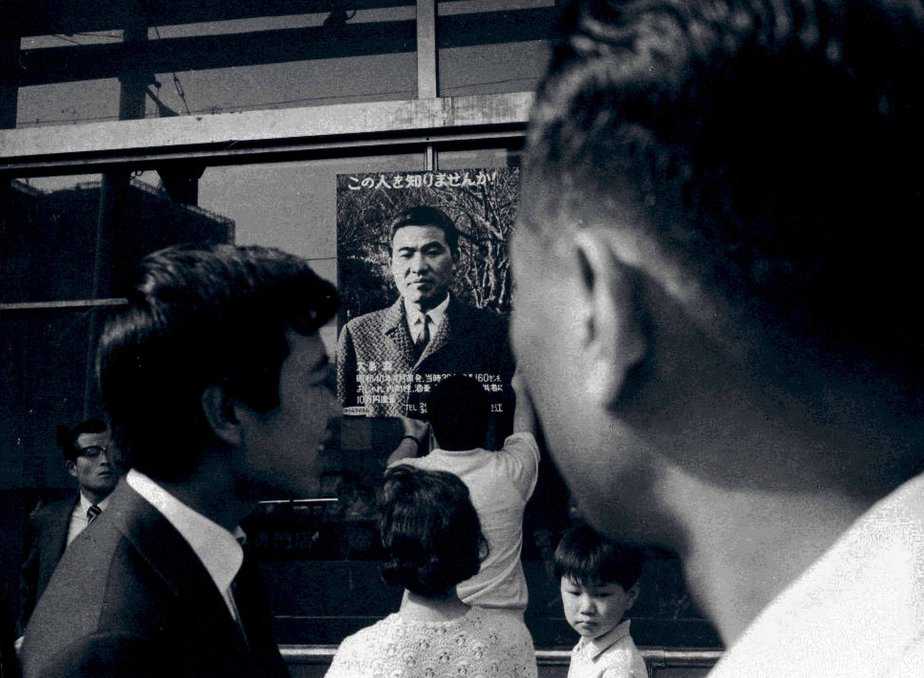
A man hangs a poster of the vanished Mr Oshima. Shoppers pass by. DP: Kenji Ishiguro.
Jōhatsu, literally “evaporation” is the Japanese term for people disappearing without a trace. Salesman Tadashi Oshima is one of them. Director Shōhei Imamura, together with Oshima's fiancé Yoshie Hayakawa and actor Shigeru Tsuyuguchi created an investigative documentary that looks into this man, his motives, his possible whereabouts, and the others that are gone.
人間蒸発 is a fascinating exploration of aspects of 1960s Japanese society that make jōhatsu distinct from similar phenomena elsewhere.
“You need to watch your step among all the ghosts and memories.”Tystnaden [The Silence] (Ingmar Bergman, 1963)
Apr
10
Siblings Day

Sisters Ester (Ingrid Thulin) and Anna (Gunnel Lindblom). Similar as in Bergman's Persona (1966), the women's faces appear to complete each other. DP: Sven Nykvist.
#Sisters Ester and Anna arrive with Anna's son Johan in the small Central European town of Timoka. The country verges on the brink of war. Unwell Ester is confined to her hotel room, Anna roams Timoka's establishments, Johan wanders the hotel corridors.
– Ester
It's hard to watch #Bergman's Tystnaden without #StanleyKubrick's ghosts sidling in. Tystnaden however doesn't need consternation to cause dread. The interaction and lack thereof between the three leads and the few extras translate into something merely tangible and evermore frightful.